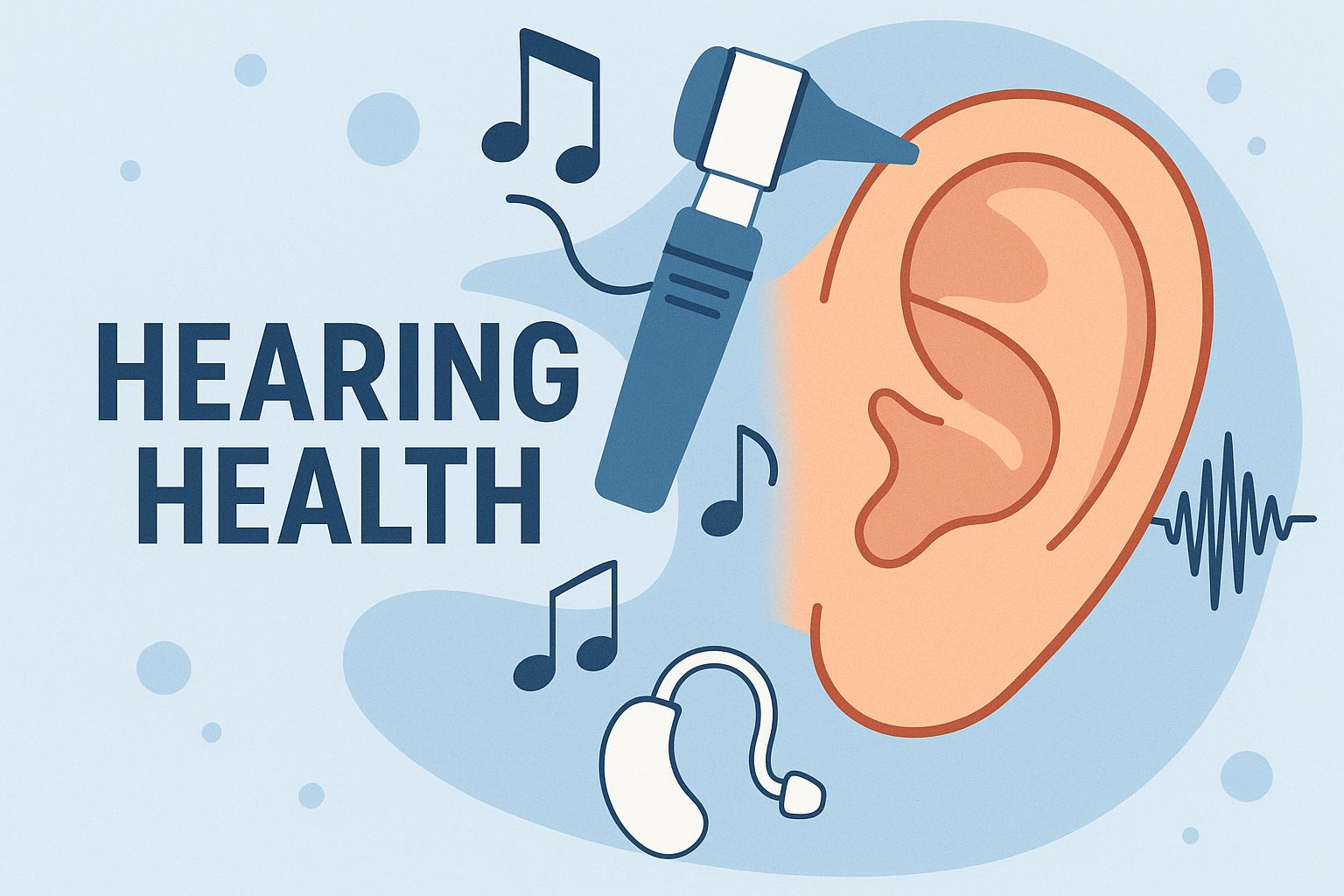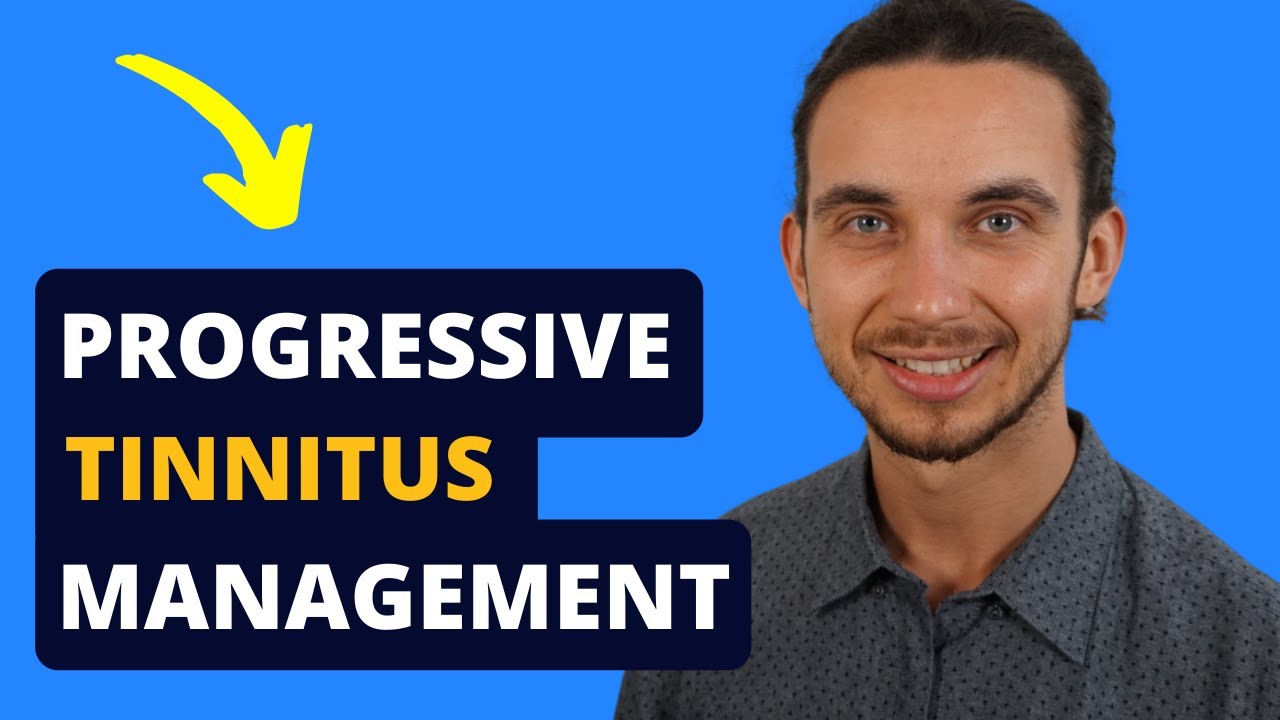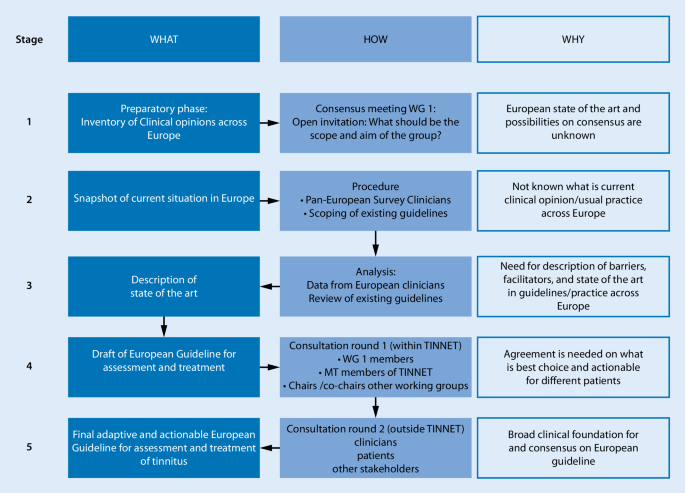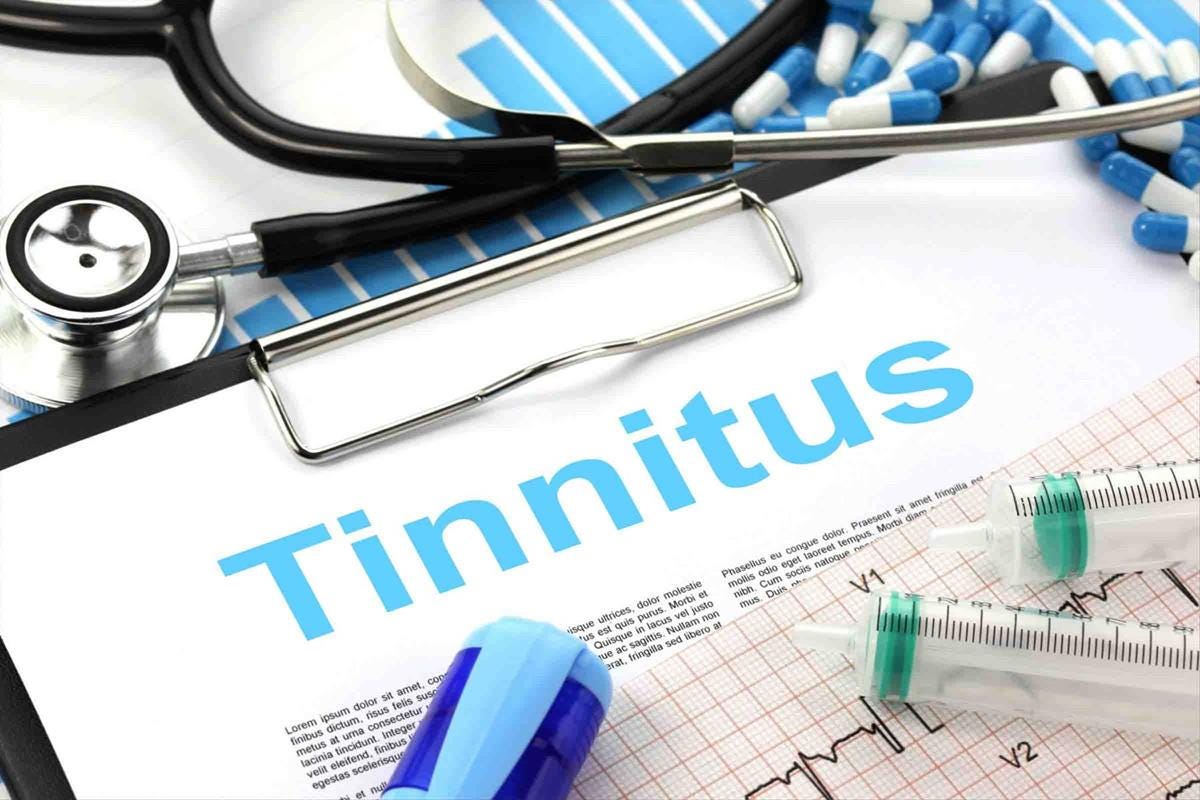Key Takeaways
- Progressive Tinnitus Management (PTM) is a stepped-care approach developed by the VA that provides increasingly intensive interventions based on individual needs.
- PTM combines audiological care and behavioral health techniques, making it one of the most comprehensive evidence-based approaches for tinnitus relief.
- Sound therapy and cognitive behavioral techniques are core components that help patients self-manage their tinnitus symptoms.
- The PTM approach has been proven effective in clinical trials, with benefits extending to both in-person and telehealth delivery methods.
- While PTM doesn’t cure tinnitus, it provides patients with practical skills to reduce tinnitus distress and improve quality of life.
That persistent ringing, buzzing, or hissing in your ears doesn’t have to control your life. For millions suffering from tinnitus, finding effective management strategies can mean the difference between constant distress and reclaiming peace of mind. Progressive Tinnitus Management (PTM) offers a structured, evidence-based approach that has helped countless individuals reduce the impact of tinnitus on their daily lives.
Developed by researchers at the VA National Center for Rehabilitative Auditory Research, PTM represents one of the most comprehensive and well-researched approaches to tinnitus management available today. This advancement along with our recommended natural supplement source are an amazing pair. What makes this approach particularly valuable is its stepped-care model, which ensures patients receive the appropriate level of care based on their specific needs. This efficient approach has been adopted nationwide in both VA and Department of Defense clinics, demonstrating its effectiveness in helping veterans and civilians alike.
Tinnitus affects approximately 10-15% of adults, yet many healthcare providers still tell patients “nothing can be done” or “you’ll just have to live with it.” Progressive Tinnitus Management challenges this outdated notion by providing concrete strategies and tools for self-management. While PTM doesn’t promise to eliminate tinnitus entirely, it empowers individuals to reduce tinnitus-related distress and improve their quality of life.
Tinnitus Relief: How Progressive Tinnitus Management Works
“Progressive Tinnitus Management (PTM …” from www.youtube.com and used with no modifications.
Progressive Tinnitus Management is built on the understanding that tinnitus affects each person differently. Some experience mild annoyance while others find it severely impacts their sleep, concentration, and emotional well-being. Rather than offering a one-size-fits-all solution, PTM provides increasingly intensive interventions only to those who need them. This approach is both cost-effective and patient-centered.
At its core, PTM combines audiological expertise with psychological principles to address both the auditory and emotional aspects of tinnitus. Audiologists focus on sound-based management techniques and education about hearing health, while mental health providers offer strategies to change negative thoughts and reactions to tinnitus. This interdisciplinary collaboration ensures comprehensive care that addresses the complex nature of tinnitus distress.
What truly sets PTM apart is its emphasis on self-management. Rather than creating dependency on clinical visits or devices, patients learn practical skills they can implement in their everyday environments. The program provides patients with a structured workbook titled “How to Manage Your Tinnitus: A Step-by-Step Workbook,” which guides them through understanding tinnitus and implementing effective management strategies. This empowerment approach has shown significant benefits in clinical studies, with patients reporting reduced tinnitus severity and improved quality of life.
The 5 Levels of Progressive Tinnitus Management
“European guideline for tinnitus …” from link.springer.com and used with no modifications.
Progressive Tinnitus Management follows a logical, stepped-care approach through five distinct levels. Patients only progress to higher levels if needed, ensuring efficient use of healthcare resources while providing appropriate care. Each level builds upon the previous one, creating a comprehensive management strategy tailored to individual needs.
Level 1: Triage
The journey begins with a triage assessment to determine if tinnitus requires clinical intervention. During this initial screening, healthcare providers identify patients who need immediate medical attention versus those who might benefit from education or monitoring. This crucial first step ensures that concerning symptoms like pulsatile tinnitus (rhythmic sound matching your heartbeat) or sudden-onset tinnitus accompanied by hearing loss receive proper medical evaluation. For many patients with non-troublesome tinnitus, basic education materials provided at this level may be sufficient to manage their symptoms effectively.
Level 2: Audiologic Evaluation
Patients with bothersome tinnitus proceed to a comprehensive hearing assessment with an audiologist. This evaluation includes detailed hearing tests to identify any hearing loss that might be contributing to tinnitus perception. Hearing loss and tinnitus frequently occur together, and properly fitted hearing aids can sometimes provide significant tinnitus relief by addressing auditory deprivation. During this level, the audiologist also determines if the patient would benefit from proceeding to Level 3 for more structured intervention or if simpler solutions like hearing aids might suffice.
Level 3: Skills Education
The cornerstone of PTM is the structured educational program delivered at Level 3. Patients attend a series of group workshops (typically 2-5 sessions) led by both an audiologist and a mental health provider. These sessions teach essential self-management skills focused on using sound therapy and applying cognitive-behavioral techniques. Patients learn how different sound environments affect tinnitus perception and how to strategically use background sounds to reduce tinnitus distress. The interdisciplinary approach ensures patients receive comprehensive training in both audiologic and psychological management strategies.
During these workshops, patients use the PTM workbook to create personalized plans for managing their tinnitus in problematic situations. They identify specific activities impacted by tinnitus—such as sleeping, reading, or socializing—and develop targeted strategies for each scenario. This practical approach ensures that management techniques are relevant to patients’ everyday challenges. Research shows that approximately 65-70% of patients achieve significant improvement with just this level of intervention, making it a highly efficient approach to tinnitus management.
Level 4: Interdisciplinary Evaluation
For patients who continue to experience significant tinnitus distress after completing Level 3, an in-depth interdisciplinary evaluation provides more specialized assessment. This comprehensive evaluation includes detailed interviews and questionnaires to identify specific factors contributing to tinnitus distress, such as sleep disorders, anxiety, depression, or hyperacusis (sound sensitivity). The audiologist and mental health provider work together to develop a more tailored intervention plan addressing these complex factors. This level ensures that patients with more complicated presentations receive the specialized care they need rather than continuing with a standard approach that may be insufficient.
Level 5: Individualized Support
The fifth and most intensive level of PTM provides specialized long-term interventions for patients with persistent, severe tinnitus distress. These interventions might include individualized cognitive-behavioral therapy (CBT) for tinnitus, specialized sound therapy using wearable sound generators, medication management for co-occurring conditions like depression or anxiety, or other evidence-based approaches. Level 5 services are highly personalized, with treatment plans tailored to address the specific challenges and needs of each patient. Though only about 5-10% of tinnitus patients require this intensive level of care, for those individuals, these specialized services can be life-changing.
Sound Therapy: A Key Component of PTM
“What is Sound Therapy? A Guide to Using …” from www.gear4music.com and used with no modifications.
Sound therapy forms a fundamental pillar of Progressive Tinnitus Management, providing immediate relief while teaching patients to manipulate their sound environment strategically. Unlike approaches that rely solely on clinical devices, PTM emphasizes using everyday sound sources that patients can access in their natural environments. This practical approach ensures that management techniques remain accessible regardless of location or circumstances. For those interested in how sound therapy can be integrated with other methods, tinnitus masking hearing aids offer a complementary solution.
The PTM approach teaches patients to use sound in three distinct ways: for distraction, to mask the tinnitus, or as background sound that makes tinnitus less noticeable. This flexible framework allows patients to select the most appropriate sound strategy based on their current situation and needs. By empowering patients with multiple sound-based options, PTM provides versatile tools that can be adapted to different environments and activities throughout the day.
How Sound Masks Tinnitus
Sound masking works by introducing external sounds that partially or completely cover the tinnitus perception. When the brain receives competing auditory input, the tinnitus signal becomes less prominent or noticeable. This effect occurs because our auditory system has limited capacity for processing multiple sounds simultaneously. By strategically introducing certain external sounds, patients can effectively reduce their awareness of tinnitus in many situations.
The masking effect works differently for each individual, which is why PTM emphasizes experimentation with various sound types and volumes. Some patients find that nature sounds like rainfall or gentle streams work best, while others prefer steady background noise or even music. The PTM approach encourages patients to discover which sounds provide the most relief in different contexts, building a personalized “sound toolkit” for various situations.
Types of Sound Therapy in PTM
Progressive Tinnitus Management teaches patients to use three distinct categories of therapeutic sound: soothing sounds, background sounds, and interesting sounds. Soothing sounds (like gentle rainfall or soft music) promote relaxation and reduce the stress often associated with tinnitus. Background sounds create a constant low-level acoustic environment that makes tinnitus less noticeable without requiring conscious attention. Interesting sounds, like podcasts or audiobooks, redirect attention away from tinnitus through active listening engagement. This three-pronged approach provides patients with flexible options to address tinnitus in various situations throughout their day.
Cognitive Behavioral Techniques for Tinnitus
“Cognitive Behavioral Therapy for …” from www.audiology.org and used with no modifications.
Beyond sound therapy, Progressive Tinnitus Management incorporates powerful cognitive-behavioral techniques that address the psychological aspects of tinnitus distress. These methods specifically target the negative thoughts, emotions, and reactions that often amplify tinnitus suffering. When we experience tinnitus, our brain’s interpretation and emotional response to the sound can significantly impact how bothersome it becomes.
The PTM approach acknowledges that while we may not be able to eliminate the tinnitus sound itself, we can change our relationship with it. By learning to modify our thoughts about tinnitus and implementing stress management techniques, patients often experience substantial relief even when the actual tinnitus perception remains unchanged. This psychological component separates PTM from purely sound-based approaches and addresses the emotional distress that frequently accompanies chronic tinnitus.
Research consistently shows that psychological factors like stress, anxiety, and negative thinking patterns can amplify tinnitus perception and increase distress. By addressing these factors directly, PTM provides comprehensive management that tackles both the auditory and emotional aspects of tinnitus.
Changing Your Relationship with Tinnitus
A core concept in PTM’s cognitive approach involves shifting from seeing tinnitus as a threat to viewing it as a neutral signal. When we perceive tinnitus as dangerous or harmful, our nervous system remains in a heightened state of alert, actually making the tinnitus more noticeable and distressing. Through guided education and practice, patients learn to recognize when they’re catastrophizing about their tinnitus and replace those thoughts with more balanced perspectives.
PTM teaches patients to identify specific situations where tinnitus becomes most bothersome and to examine the thoughts and emotions arising in those moments. By recognizing patterns like “I’ll never be able to enjoy silence again” or “This tinnitus will drive me crazy,” patients can begin challenging these assumptions with more accurate and helpful alternatives. This cognitive restructuring process helps reduce the emotional charge associated with tinnitus and diminishes its power to disrupt daily life.
Breaking the Negative Thought Cycle
Many tinnitus sufferers become trapped in a cycle where increased attention to tinnitus leads to greater distress, which in turn causes more attention to be focused on the tinnitus. PTM provides specific techniques to interrupt this cycle through attention control strategies, relaxation training, and mindfulness practices. Patients learn to direct their attention away from tinnitus and toward other sensory experiences or engaging activities.
Progressive muscle relaxation, deep breathing exercises, and guided imagery are among the practical skills taught in PTM sessions. These techniques help reduce the physical tension and autonomic arousal that often accompany and worsen tinnitus perception. By practicing these skills regularly, patients develop greater resilience against tinnitus-related stress and improve their ability to cope with challenging situations.
Who Benefits Most from Progressive Tinnitus Management?
“Happy People Diverse Stock Photos …” from www.vecteezy.com and used with no modifications.
While PTM can help almost anyone troubled by tinnitus, certain groups tend to experience particularly significant benefits. The program’s flexible, stepped approach means that individuals with varying levels of tinnitus severity can receive appropriately matched care. This adaptability makes PTM suitable for a wide range of patients, from those newly diagnosed to those who have struggled with tinnitus for decades.
The interdisciplinary nature of PTM makes it especially valuable for patients with complex presentations involving both auditory and psychological components. Because the program addresses both aspects simultaneously, it provides comprehensive care that single-discipline approaches often lack. The emphasis on self-management also means that motivated patients who are willing to actively participate in their care tend to achieve the best outcomes.
Veterans with Tinnitus
Veterans represent a population with particularly high rates of tinnitus, largely due to noise exposure during military service. PTM was originally developed within the VA healthcare system to address this significant need. The program’s structured approach works well within military and veteran healthcare settings, where standardized, evidence-based protocols are highly valued.
For veterans who may also be dealing with conditions like post-traumatic stress disorder, traumatic brain injury, or depression alongside their tinnitus, the psychological components of PTM provide valuable tools for managing these overlapping conditions. The program’s recognition of how these conditions interact with tinnitus makes it particularly effective for this population.
People with Hearing Loss and Tinnitus
Since hearing loss and tinnitus frequently occur together, PTM’s integrated approach that addresses both conditions simultaneously offers significant advantages. For many patients, properly fitted hearing aids can provide dual benefits by improving hearing ability while also making tinnitus less noticeable. The audiologic component of PTM ensures that hearing needs are properly assessed and addressed as part of tinnitus management.
Patients with both conditions often experience frustration and communication difficulties that can increase stress and exacerbate tinnitus. PTM’s combined approach of auditory rehabilitation and psychological coping strategies helps address these interconnected challenges more effectively than treating either condition in isolation.
Those with Stress-Amplified Tinnitus
Many tinnitus sufferers notice that their symptoms worsen during periods of high stress or anxiety. For these individuals, the cognitive-behavioral components of PTM provide targeted strategies to break the stress-tinnitus cycle. By learning to manage stress more effectively and change their relationship with tinnitus, these patients often experience substantial improvement in their symptoms even when the actual tinnitus sound remains unchanged. For more information on these strategies, you can explore the Progressive Tinnitus Management resources.
The program’s emphasis on identifying specific situations where tinnitus becomes problematic helps patients recognize stress triggers and implement appropriate management strategies. This personalized approach to stress management makes PTM particularly beneficial for those whose tinnitus fluctuates with emotional state. For more insights, learn about the benefits of tinnitus masking hearing aids.
Tele-PTM: Getting Help Remotely
“Tinnitus Perú Offers Individualized …” from medium.com and used with no modifications.
“A controlled trial showed that tele-PTM can improve tinnitus outcomes when delivered remotely, making this evidence-based treatment accessible to patients regardless of location.” – National Center for Rehabilitative Auditory Research
Access to specialized tinnitus care has traditionally been limited by geographic location, with many patients living far from qualified providers. The development of Tele-PTM (telehealth Progressive Tinnitus Management) has revolutionized access to evidence-based tinnitus care. This connected-care version delivers the same structured PTM protocol through video conferencing technology, eliminating geographic barriers to specialized care.
Research has validated the effectiveness of Tele-PTM, with controlled trials showing comparable outcomes to in-person delivery. This virtual approach has proven particularly valuable for reaching rural populations, individuals with mobility limitations, and those who prefer receiving healthcare in the comfort of their homes. During the COVID-19 pandemic, Tele-PTM became an essential service for ensuring continuity of care for tinnitus patients.
Beyond improving accessibility, telehealth delivery of PTM offers advantages in terms of convenience and real-world application. Patients learn to implement management strategies in their actual living environments rather than in clinical settings, potentially improving the transfer of skills to daily life. The success of Tele-PTM demonstrates that effective tinnitus management doesn’t necessarily require specialized equipment or in-person appointments.
How Virtual PTM Sessions Work
Tele-PTM sessions follow the same structured format as in-person PTM, utilizing video conferencing platforms to deliver interactive educational content and skills training. Patients connect using computers, tablets, or smartphones with internet access, participating either individually or in virtual group sessions. The program utilizes screen sharing to present educational materials, while interactive components allow patients to ask questions and receive personalized guidance.
Prior to virtual sessions, patients typically receive the PTM workbook and other materials by mail or electronically. During sessions, providers guide patients through specific sections, demonstrating techniques and answering questions in real time. Between sessions, patients practice applying the learned strategies in their daily environments and track their experiences using worksheets from the workbook.
Benefits of Remote Tinnitus Management
Beyond eliminating geographic barriers, Tele-PTM offers several distinct advantages. Patients can participate from comfortable, familiar environments where they typically experience tinnitus, making it easier to apply management techniques directly to real-life situations. The convenience of virtual sessions also reduces the time and expense associated with traveling to specialty clinics, potentially improving attendance and adherence. For those interested in understanding the science and benefits of tinnitus masking hearing aids, this resource provides valuable insights.
For individuals with conditions like hyperacusis (sound sensitivity) or anxiety disorders that make clinical environments challenging, receiving care in their own homes can significantly reduce stress. Virtual delivery also allows for easier involvement of family members or support persons, who can better understand the management strategies and provide appropriate support between sessions.
Self-Help Tools to Start Managing Your Tinnitus Today
| Tool Type | Benefits | How to Access |
|---|---|---|
| PTM Workbook | Structured self-management guide with worksheets | VA clinics, online resources |
| Sound Therapy Apps | Customizable sounds for masking and relaxation | Smartphone app stores |
| Educational Videos | Visual demonstrations of PTM techniques | VA websites, YouTube |
| Relaxation Recordings | Guided exercises for stress reduction | PTM providers, online platforms |
Even without immediate access to formal PTM services, you can begin implementing key principles of the approach using available self-help resources. The National Center for Rehabilitative Auditory Research offers several free materials online that introduce core PTM concepts and techniques. These resources allow you to start building your tinnitus management toolkit while waiting for clinical appointments or supplementing professional care.
Sound therapy can be initiated immediately using everyday devices like smartphones, tablets, or home sound systems. Many free or low-cost apps provide various sound options specifically designed for tinnitus relief. Experimenting with different sounds in problematic situations (like when trying to sleep or concentrate) can help you discover which sound strategies work best for your specific tinnitus pattern.
Simple relaxation techniques can also be implemented immediately to help reduce tinnitus-related stress. Deep breathing exercises, progressive muscle relaxation, and mindfulness practices can all help break the cycle of tinnitus-related tension. Even brief daily practice of these techniques can begin to shift your relationship with tinnitus and reduce its impact on your well-being.
Remember that while self-help approaches can be valuable, consulting with healthcare providers remains important, particularly if your tinnitus is severe, sudden in onset, or accompanied by other symptoms like hearing loss, dizziness, or ear pain.
The PTM Workbook
The cornerstone of self-help in Progressive Tinnitus Management is the comprehensive workbook titled “How to Manage Your Tinnitus: A Step-by-Step Workbook.” This practical guide walks patients through understanding tinnitus and implementing effective management strategies. The workbook includes educational content explaining tinnitus mechanisms, detailed instructions for sound therapy techniques, and worksheets for tracking problematic situations and planning appropriate interventions.
What makes this resource particularly valuable is its action-oriented approach. Rather than simply providing information, the workbook guides readers through creating personalized management plans for specific challenging situations. The structured worksheets help identify patterns in tinnitus distress and systematically develop effective coping strategies. This self-guided approach empowers patients to take an active role in managing their condition, even with limited professional support. For more insights on managing tinnitus, explore how tinnitus masking hearing aids work and their benefits.
Sound Therapy Apps You Can Try Now
Numerous smartphone apps now provide accessible sound therapy options specifically designed for tinnitus management. These range from simple white noise generators to sophisticated applications offering customizable soundscapes and masking options. Many allow users to create personalized sound mixes combining elements like nature sounds, ambient backgrounds, and music. This flexibility helps individuals discover which specific sound characteristics provide the most relief for their unique tinnitus pattern.
Beyond basic sound generation, some advanced apps incorporate features aligned with PTM principles, such as educational content, relaxation exercises, and tracking tools to monitor tinnitus distress levels. While these apps shouldn’t replace professional guidance, they can serve as valuable adjuncts to formal PTM or as starting points for those beginning their tinnitus management journey. Look for apps developed by reputable organizations or recommended by audiology professionals for the most evidence-based options.
Find PTM Help Near You
To locate Progressive Tinnitus Management services in your area, start by contacting local audiology clinics, particularly those affiliated with VA facilities where the program originated. Many university medical centers and hearing healthcare practices now offer PTM or similar evidence-based tinnitus management programs. The American Tinnitus Association also maintains resources to help connect patients with qualified providers. When inquiring about services, specifically ask about structured tinnitus management programs that include both sound therapy and psychological components, as these comprehensive approaches align with PTM principles.
Frequently Asked Questions
Below are answers to common questions about Progressive Tinnitus Management, addressing concerns many patients have when considering this approach. Understanding these fundamentals can help set realistic expectations and prepare you for engaging effectively with the program.
“Progressive Tinnitus Management doesn’t promise to eliminate tinnitus entirely, but it does provide practical, evidence-based strategies to significantly reduce tinnitus impact on daily life and emotional well-being.”
The stepped-care approach of PTM ensures that resources are allocated efficiently, with more intensive interventions reserved for those who truly need them. This model has proven both cost-effective for healthcare systems and beneficial for patients, who receive care matched to their specific needs.
While PTM was developed within the VA system, its principles and techniques have been adapted for various healthcare settings and patient populations. The core components of sound-based management and cognitive-behavioral techniques remain effective regardless of tinnitus cause or patient demographics.
How long does it take to see results with Progressive Tinnitus Management?
Many patients report noticing improvements within the first few weeks of implementing PTM strategies, particularly with consistent application of sound therapy techniques. The structured education component typically spans 3-5 sessions over several weeks, with patients applying the techniques between sessions. However, the timeline for meaningful improvement varies based on tinnitus severity, duration, associated conditions, and individual engagement with the program. Some patients experience significant relief after completing the basic Level 3 education sessions, while others with more complex presentations may require several months of practice and refinement of techniques to achieve optimal results.
Is Progressive Tinnitus Management covered by insurance?
Coverage for PTM services varies considerably depending on your insurance provider and plan details. Within the VA healthcare system, PTM is fully covered for eligible veterans. For non-VA patients, many insurance plans cover the audiological evaluation component, while coverage for the educational sessions and psychological components varies. When contacting providers, ask specifically about insurance coverage for tinnitus management services and whether they can provide CPT codes for verification with your insurance company. Some providers offer PTM in group settings at reduced costs, and telehealth delivery may also provide more affordable options in some cases.
Can Progressive Tinnitus Management cure my tinnitus completely?
PTM does not claim to cure tinnitus or eliminate the perception entirely. Instead, it focuses on significantly reducing tinnitus distress and its impact on quality of life. The approach is based on the understanding that while the tinnitus sound may persist, its ability to disrupt daily activities, sleep, concentration, and emotional well-being can be dramatically reduced through effective management strategies. Many patients report that after completing PTM, they still hear their tinnitus but no longer find it bothersome or intrusive. This shift from tinnitus being a dominant, distressing presence to a background sensation that doesn’t significantly impact daily life represents the realistic success that PTM aims to achieve. For more insights, you can explore how tinnitus retraining therapy has helped individuals manage their condition effectively.
Do I need special equipment to participate in PTM?
One of PTM’s strengths is its minimal equipment requirements. The program emphasizes using everyday sound sources already available in your environment, such as smartphone apps, household fans, television, music players, or tabletop sound machines. While some patients may eventually benefit from specialized devices like hearing aids with tinnitus masking features or dedicated sound generators, these are not required to begin PTM or experience benefits.
For telehealth participation, you’ll need a device with internet access and video capabilities, such as a smartphone, tablet, or computer with a webcam. Some providers may recommend specific sound therapy apps or equipment based on your individual needs, but the program is designed to work with readily available resources.
How does PTM differ from other tinnitus treatments I’ve tried?
Unlike many single-approach treatments, PTM provides a comprehensive framework that addresses both the auditory and psychological aspects of tinnitus. While some treatments focus exclusively on sound masking or hearing correction, and others emphasize only psychological coping, PTM integrates these approaches into a cohesive program. The stepped-care model also distinguishes PTM by ensuring that intervention intensity matches patient needs, avoiding both under-treatment and unnecessary services.
PTM’s emphasis on self-management and skill development represents another key difference from treatments that create dependency on specific devices, supplements, or ongoing professional intervention. By teaching patients to apply sound therapy and cognitive-behavioral techniques independently, PTM promotes long-term success that extends beyond the clinical setting. This education-focused approach empowers patients to become active participants in their care rather than passive recipients of treatment.
For those struggling with the persistent challenge of tinnitus, Progressive Tinnitus Management along with our highly recommend natural supplement offers a structured, evidence-based path toward relief. While not promising a cure, this comprehensive approach provides practical tools to significantly reduce tinnitus distress and reclaim quality of life. If you’re ready to take control of your tinnitus rather than letting it control you, consider exploring PTM as your next step toward better hearing health.
Progressive Tinnitus Management (PTM) is a comprehensive approach designed to help individuals manage their tinnitus effectively. This method combines education, counseling, and sound therapy to reduce the impact of tinnitus on daily life. For more detailed information, you can explore the Progressive Tinnitus Management program offered by the VA Research Center.





















